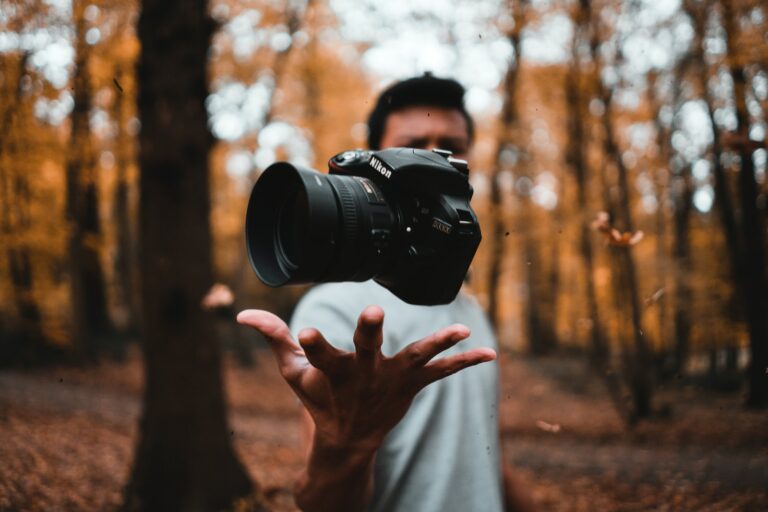Online casinos have gained immense popularity in recent years, offering players the convenience of accessing their favorite games from the comfort of their homes. However, with this convenience comes an increased risk of cyber threats and fraudulent activities. To ensure a secure and enjoyable gaming experience, it is imperative for every online casino player to be aware of specific security measures.
This article will provide a comprehensive guide highlighting the importance of online safety, potential risks when using online casinos, and crucial security measures that players should know, providing valuable insights to protect their personal and financial information while engaging in online casino activities.
Why is Online Safety Important When Gambling
Protection from Identity Theft and Fraud
Online safety measures are crucial in preventing identity theft, which involves the unauthorized use of personal information for fraudulent activities. Robust security protocols such as encryption and firewalls provide a shield against hackers attempting to access sensitive data like credit card details or social security numbers. Implementing multi-factor authentication adds an extra layer of protection, ensuring that only authorized individuals can access player accounts.
Safety of Financial Transactions
Online gambling involves real money transactions, making it essential for players to engage in platforms with secure payment gateways. Reputable online casinos employ advanced payment systems that protect financial data, minimizing the risk of unauthorized transactions or fraud. Trusted payment providers and banks also contribute to online safety by incorporating strict security measures, such as two-factor authentication and fraud detection systems.
Prevention of Unfair Practices
Online safety measures play a crucial role in preventing unfair practices such as cheating or tampering with game outcomes. Rigorous vetting processes and licensing requirements for online gambling platforms ensure that players engage in fair and transparent games. Advanced technologies like random number generators guarantee fair play by producing unpredictable outcomes, maintaining the integrity of the gambling experience.
Avoidance of Addiction and Protection of Vulnerable Individuals
Online safety addresses the issue of responsible gambling, which protects vulnerable individuals from addiction-related problems. Robust safety protocols enable operators to implement mechanisms like self-exclusion or deposit limits, promoting responsible behavior among players. Age verification processes prevent underage individuals from accessing online gambling websites, keeping them safe from potential harm.
Protection Against Cyberattacks
Robust online safety practices safeguard players from cyberattacks, including Distributed Denial of Service attacks or malware insertion. Adequate website security prevents malicious actors from disrupting the online gambling experience or compromising player accounts. Regular security audits and prompt software updates ensure that vulnerabilities are promptly identified and patched.
Privacy Protection
Online safety ensures the safeguarding of players’ privacy by implementing strict privacy policies and data protection measures. Enhanced consent requirements and transparent data collection practices offer players peace of mind regarding their personal information.
Compliant online gambling operators adhere to privacy regulations and protect players’ data against unauthorized access or distribution.
Potential Risks of Gambling Online
Financial Loss
One of the most significant risks associated with online gambling is the potential for financial loss. Due to the convenience and accessibility of online gambling platforms, individuals may be more prone to overspending or becoming addicted to gambling. This can lead to substantial financial consequences, as people may wager more money than they can afford to lose.
Addiction
Online gambling can be highly addictive, as it offers instant gratification and continuous engagement. The ease of access to gambling sites, coupled with the ability to gamble in the comfort of one’s own home, can contribute to the development of compulsive gambling behavior. Internet gambling addiction can have severe consequences on an individual’s personal, professional, and financial life.
Privacy and Security Concerns
Engaging in online gambling requires sharing personal and financial information with various gambling operators. This raises concerns about security and privacy, as there is always a risk of data breaches or unauthorized access to sensitive information. The online gambling industry has witnessed a surge in fraudulent activities. The internet brings with it the cumbersome task of verifying the legitimacy and reliability of online gambling operators.
Regrettably, fraudulent websites and scams abound, preying on unsuspecting individuals. Such illicit operations may fail to adhere to necessary regulations, compromising players’ privacy and the security of their financial information. Online gamblers must be cautious about the platforms they use, ensuring they are reputable and secure to protect their confidential data.
Social Isolation
Another inherent risk of online gambling is the lack of face-to-face interaction. Unlike traditional casinos, where individuals engage in direct communication with dealers and other players, online gambling platforms operate in a virtual environment. This absence of social interaction can make it challenging to build personal connections, leading to a sense of isolation and detachment. Moreover, the anonymity provided by online platforms can fuel reckless behavior as individuals may feel less accountable for their actions, increasing the risk of problem gambling.
Underage Gambling
Despite strict regulations and age verification processes, online gambling platforms can still be accessed by underage individuals. Young people may exploit loopholes or use false information to create accounts and gamble online. This puts them at risk of developing gambling habits at an early age, potentially leading to long-term negative consequences.
Unregulated Operators
The online gambling industry is vast, and not all operators are regulated or licensed by reputable authorities. This poses a risk for players as unregulated platforms may engage in unfair practices, jeopardizing the integrity of the games or withholding winnings. It is crucial for online gamblers to research and choose licensed operators to ensure a safe and fair gambling experience.
Technological Issues
One often overlooked risk of online gambling is the potential for technological issues. Technical glitches, connectivity problems, and software malfunctions can mar the overall gambling experience, potentially leading to financial losses or disputes over winnings. Furthermore, the reliance on digital payment systems carries its own set of risks. Cybersecurity threats, such as hacking and identity theft, pose a significant concern when dealing with financial transactions online. Individuals must remain vigilant and take necessary precautions to safeguard their personal and financial information from malicious actors lurking in the digital realm.
How to Stay Safe When Gambling Online
Licensed and Regulated Casinos
Selecting a licensed and regulated online casino is the foundation of a secure gaming experience. Established regulatory bodies, such as the Malta Gaming Authority, the United Kingdom Gambling Commission, or the Gibraltar Regulatory Authority, ensure that online casinos operate ethically and adhere to stringent security protocols. This is information that you can access on their website – if you are unable to find it, it is a red flag and you should steer clear from the provider.
Encrypted Data Transmission
The encryption of sensitive data, such as personal details and financial transactions, is crucial for safeguarding players’ information from unauthorized access. Online casinos utilizing encryption technology provide a secure environment by scrambling data, rendering it unreadable by cybercriminals so that you can play online casino games without the concern of identity theft. Ensuring that the online casino you choose takes your security seriously, will help you rest assured that you remain safe whilst using their site.
Strong Account Passwords
This is an online security tip that most people should implement in every single aspect of their online use. Creating robust passwords is paramount to protecting one’s online casino account. Players should opt for complex passwords that combine uppercase and lowercase letters, numbers, and symbols. Make sure that you avoid using common words that are easy to guess by people that know you, such as the name of your childhood pet or your birth location. Additionally, regular password updates and refraining from sharing login credentials enhance account security.
Two-Factor Authentication
Enabling two-factor authentication adds an additional layer of security to online casino accounts. With this feature, players need to provide a unique code sent to their registered mobile devices or email addresses, further fortifying account security against unauthorized access. This ensures that hackers are unable to access or steal your information, even if they pass through the first step.
Reliable Software Providers
Verifying the reputation and reliability of online casino software providers is essential for player security. Renowned providers undergo stringent checks to ensure the integrity and fairness of their games. Opting for casinos powered by reputable software providers eliminates the risk of rigged games.
Regular System Updates
Staying up-to-date with the latest updates and patches for operating systems, browsers, and antivirus software is crucial. Regular system updates ensure that vulnerabilities are patched, reducing the risk of malicious attacks. Much like having a strong password, this is something that you need to do yourself, no matter what you use the internet for.
Safe Payment Methods
Utilizing secure and reliable payment methods for depositing and withdrawing funds is vital. Reputable online casinos offer multiple secure options, including credit cards, e-wallets, and cryptocurrencies, each with their encryption and authentication measures. As discussed previously, financial loss is one of the major risks when it comes to using these platforms. This is why it is essential that you only use providers that offer you the most secure payment methods.
Privacy Policies
Most people accept the terms and conditions of every service they access without really reading through them. However, this is a big mistake, particularly when using online casinos. Reading and understanding an online casino’s privacy policy is essential. Privacy policies outline how personal information is collected, stored, and used, providing players with transparency regarding data protection practices employed by the casino. Read this thoroughly before using a provider.
Responsible Gambling Measures
In addition to security, responsible gambling measures should be prioritized. Reputable online casinos promote responsible gambling by facilitating self-exclusion options, and deposit limits, and providing links to support organizations for players struggling with addiction.
Casino Reviews and Ratings
Most businesses will display the comments of any previous users regarding their experience. Before registering and playing at an online casino, it is crucial to read unbiased reviews and ratings from trustworthy sources. These reviews often highlight any security concerns or issues players may encounter, enabling informed decision-making. Try to read as many as you can – both good and bad ones. If you are unable to find reviews, it is likely that the provider is untrustworthy and you should avoid it.
Anti-Money Laundering Practices
Compliance with Anti-Money Laundering protocols is crucial for online casinos. Casinos that enforce stringent measures verify players’ identities and flag suspicious transactions, ensuring the prevention of fraudulent activities within their platforms.
Secured and Verified URLs
Before accessing an online casino’s website, verifying the URL’s authenticity is pivotal. Many people fail to complete this step, as they are unaware of how to do this. Ensure the website has a secure connection (HTTPS) and legitimate certification, protecting against phishing attacks and impersonation attempts. There are plenty of scamming attempts online, as scammers bombard internet users with links and web pages to a range of online casinos, which are easy to click on. Verifying the website will help keep you safe.
Strict Age Verification
Reputable online casinos strictly enforce age verification processes to prevent underage gambling. Players must provide valid identification documents to ensure compliance with legal age requirements. If the casino you choose is requesting proof of ID, it is usually a good sign.
Transparent Terms and Conditions
As discussed previously, reading and understanding an online casino’s terms and conditions is crucial to avoid any unexpected security concerns or restrictions. Players must familiarize themselves with withdrawal policies, bonus terms, and any other conditions to ensure a smooth and secure gaming experience.
Customer Support and Redressal
It may be that at some point, you may require support as a customer. It can be frustrating when you fail to receive the help that you need. Opt for online casinos with robust customer support systems, including multiple contact options, such as live chat, email, or phone support. Prompt customer support ensures faster resolution to issues related to security breaches or account queries.
While online casinos offer exciting opportunities for entertainment and monetary gains, understanding and implementing appropriate security measures is vital for every player’s safety. By following the tips discussed on this page, online casino players can protect their personal and financial information from potential threats. Additionally, fostering responsible gambling practices and being aware of redressal options contribute to a secure and enjoyable gaming experience.












